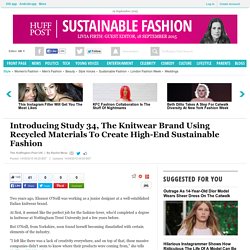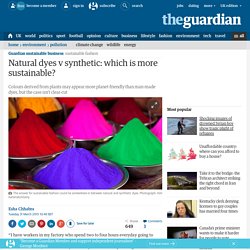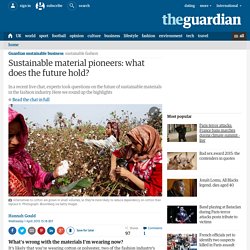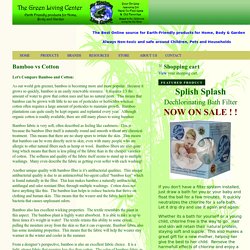

H&M on Conscious Materials. Introducing Study 34, The Knitwear Brand Using Recycled Materials To Create High-End Sustainable Fashion. Two years ago, Eleanor O'Neill was working as a junior designer at a well-established Italian knitwear brand.

At first, it seemed like the perfect job for the fashion-lover, who'd completed a degree in knitwear at Nottingham Trent University just a few years before. But O'Neill, from Yorkshire, soon found herself becoming dissatisfied with certain elements of the industry. "I felt like there was a lack of creativity everywhere, and on top of that, these massive companies didn't seem to know where their products were coming from," she tells HuffPost UK Lifestyle. "There was also so much waste that I started to get a little bit frustrated. " O'Neill left her job in 2014 and in March of this year, launched her own sustainable knitwear brand, Study 34.
Eleanor O'Neill The aim of Study 34 is simple: to produce exclusive and original knitwear that is sustainably sourced and ethically made. How can the fashion industry become more sustainable? Wearable pineapple fibres could prove sustainable alternative to leather. At weddings and formal events in the Philippines, men can often be seen wearing the Barong Tagalog, a thin and transparent embroidered garment worn over a shirt.

One of the more surprising materials used in its manufacture are fibres from pineapple leaves – and long strands of the leaves could soon also be used to make a host of other products, from trainers and clothes to bags and car upholstery. Called Piñatex - piña is Spanish for pineapple - the new material was created by Carmen Hijosa, who worked as a consultant in the Philippines leather goods industry in the 1990s. She was unimpressed with the standard of goods produced and started to look for alternatives.
It was the strength and the fineness of the pineapple leaf fibres used in the Barong Tagalog that first alerted her that there was another option: “I was looking for an alternative to leather. That was the beginning of my thinking. “We can make shoes, we can make bags. “We are completely new. People Tree - Our Cotton. From farm to fashion, People Tree produces a range of clothing for women and men with organic cotton.

Over 60% of People Tree’s collection is made with 100% organic cotton. Almost all of our cotton is 100% Fairtrade certified organic and grown by farmers who earn 30% more for their cotton. We help by supporting clean water facilities, schools, seed banks and training and fighting against GM seeds. Buying organic cotton fashion is a small thing that makes a big difference. People Tree's organic cotton is certified by Soil Association. Organic cotton is good for people and the planet Organic cotton farming is good for farmers. At Agrocel, women are paid the same as men and given paid maternity leave. Natural dyes v synthetic: which is more sustainable? “I have workers in my factory who spend two to four hours everyday going to collect water, with no guarantees they’ll even find it,” says Sonal Baid, founder of Aura Herbal Wear, who blames synthetic dye factories for polluting local water sources.

Baid and her husband, Arun, have figured out how to use natural dyes at scale at their factory in Ahmedabad, India. Now, they want to convert India’s textile manufacturers, taking them back to natural dyes on natural fabrics, a tradition that Baid said was commonplace in the country until 40 years ago, when synthetic dyes took off. Discovered in the mid-19th century by English chemist William Henry Perkin, mauveine, the first man-made colour, transformed textile manufacturing. These synthetic colours allowed manufacturers and dye houses to operate in large quantities, and offer vivid, rich colours. They became the go-to option; they stick to fabrics easily, don’t lose pigmentation, and offer a limitless palette of colour options.
FASHION & SUSTAINABILITY — Undress Runways. Sustainable material pioneers: what does the future hold? What’s wrong with the materials I’m wearing now?

It’s likely that you’re wearing cotton or polyester, two of the fashion industry’s most popular fibres. Cotton depends on large amounts of water to grow, and polyester depends on now-declining reserves of oil and gas. The idea behind sustainable materials is that they are less damaging to the environment to produce, consuming fewer natural resources and creating less pollution. Erin Smith, artist in residence at Microsoft Research explains: We are living in a time when our growing population and consumption habits are no longer going to be supportable at our present escalating rate.
Green Living Center. Let’s Compare Bamboo and Cotton: As our world gets greener, bamboo is becoming more and more popular.

Because it grows so quickly, bamboo is an easily renewable resource. It requires 1/3 the amount of water to grow that cotton uses and has no natural pests. This means that bamboo can be grown with little to no use of pesticides or herbicides whereas cotton often requires a large amount of pesticides to maintain growth. Bamboo plantations can quite easily be kept organic and replanted every year. Bamboo fabric is very soft, often described as feeling like cashmere. Another unique quality with bamboo fiber is it’s antibacterial qualities. Bamboo also has excellent wicking properties. From a designer’s perspective, bamboo is also an excellent fabric choice.